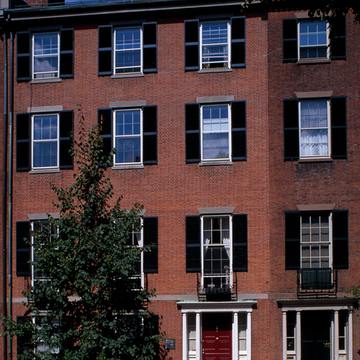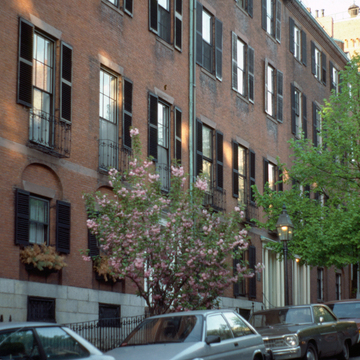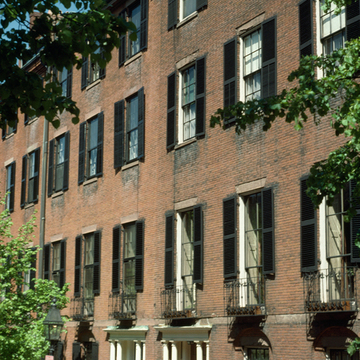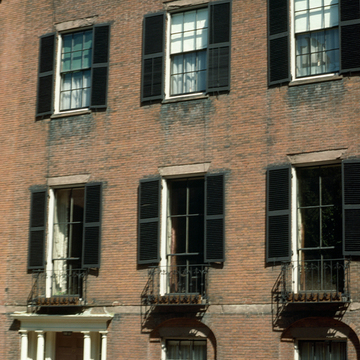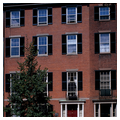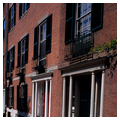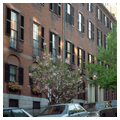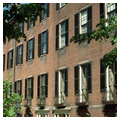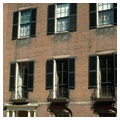One of the original Mount Vernon Proprietors, Mrs. James Swan divided her time between 16 Chestnut Street and her Dorchester country house designed by Charles Bulfinch. She commissioned Bulfinch to design three identical town houses for her daughters, who acquired the units between 1806 and 1808 as they married. These handsome houses resembled the Bulfinch row houses at 1–4 Park Row, which have been obliterated or heavily altered. The recessed ground-floor brick arches, the elliptical iron balconies, and decreasing scale of fenestration connect the two projects. Although the interiors of these town houses have been changed, the original stables designed by Bulfinch at 50, 56, and 60 Mount Vernon Street stand, all restricted to a thirteen-foot height by deed covenant. A passageway to the west of 17 Chestnut Street provided access to the stables, where the carriages were stored at the basement level and the carriage men lived above.
You are here
Swan Houses
If SAH Archipedia has been useful to you, please consider supporting it.
SAH Archipedia tells the story of the United States through its buildings, landscapes, and cities. This freely available resource empowers the public with authoritative knowledge that deepens their understanding and appreciation of the built environment. But the Society of Architectural Historians, which created SAH Archipedia with University of Virginia Press, needs your support to maintain the high-caliber research, writing, photography, cartography, editing, design, and programming that make SAH Archipedia a trusted online resource available to all who value the history of place, heritage tourism, and learning.






